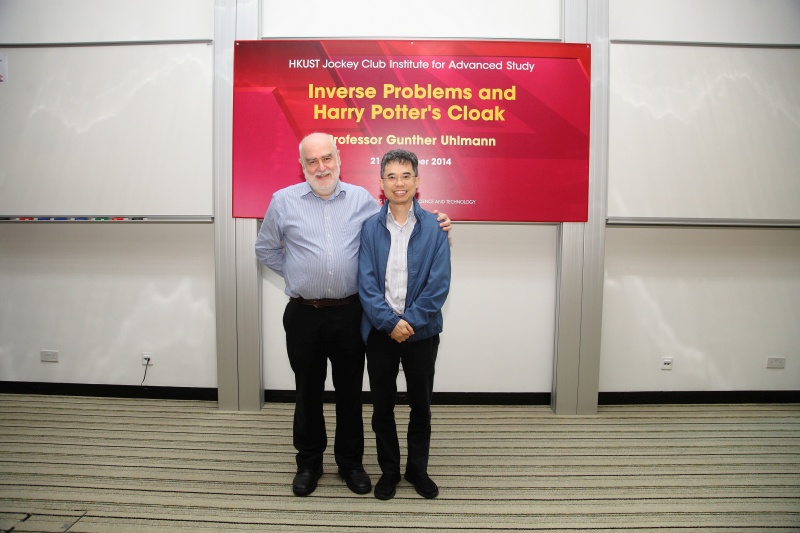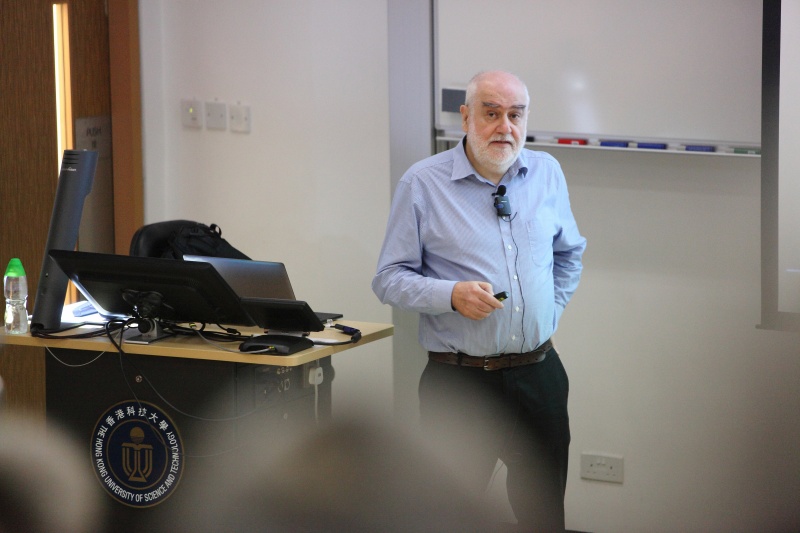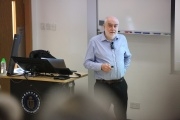Inverse Problems and Harry Potter's Cloak
Abstract
The first part of the lecture is on inverse problems. These arise in all fields of sciences and technology where causes for a desired or observed effect are to be determined. By solving an inverse problem is in fact how we obtain a large part of our information about the world.
An example is human vision: from the measurements of scattered light that reaches our retinas, our brains construct a detailed three-dimensional map of the world around us. We know about the interior structure of the Earth by using the information provided by earthquakes, the structure of DNA from solving inverse X-ray diffraction problems, and the structure of the atom and its constituents from studying the scattering when materials are bombarded with particles. Medical imaging is also a fertile area of application of inverse problems including CT scans, ultrasound, MRI, and several other imaging methods.
The second part of the lecture is on the opposite looking topic: making objects invisible. Invisibility has been a subject of human fascination for millennia, from the Greek legend of Perseus versus Medusa to the more recent The Invisible Man, The Invisible Woman, Star Trek and Harry Potter, among many others. Over the years, there have been occasional scientific prescriptions for invisibility in various settings but the route to cloaking that has received the most attention has been transformation optics. To achieve invisibility one can design materials that would steer light around a hidden region, returning it to its original path on the far side. The speaker will describe the ideas behind transformation optics.
About the speaker
Prof. Gunther Uhlmann is the world’s leading mathematician on inverse problem which focuses on determining the identity of an object by measuring how the object scatters incoming light, sound waves or other types of waves. Such problems are of immense interest to mathematicians, scientists and engineers and have important applications in daily life, including shedding light on the elusive phenomenon of invisibility. In 2003, Prof. Uhlmann has proved that by measuring the scattered waves at a boundary, a person may not be able to tell what that object is as he can construct two different objects that give exactly the same scattering. His theorem actually implies that Harry Potter’s cloak can become real. In 2006, physicists proved (independently) that the mathematical transform introduced by Prof Uhlmann can be used to design Harry Potter’s invisibility cloak.
Prof. Uhlmann obtained his PhD from the Massachusetts Institute of Technology in 1976. After postdoctoral positions at Harvard University, the Courant Institute and MIT, he was on the MIT faculty from 1980 to 1984. He joined the University of Washington in 1984, where he became Walker Family Endowed Professor in Mathematics in 2006.
Prof. Uhlmann was elected to be the Simons Fellow, Fellow of the American Mathematical Society, Finnish Distinguished Professor 2013-17, Rothschild Distinguished Visiting Fellow at Cambridge University and Isaac Newton Institute of Mathematical Sciences 2011 and Chair of Excellence 2012-13 of the Fondation Sciences Mathématiques de Paris. He is also the member of American Academy of Arts and Sciences and the foreign member of the Finnish Academy of Sciences. In 2011, he was awarded the prestigious Bôcher Memorial Prize (awarded once every three or five years) by the American Mathematical Society and the Kleinman Prize (awarded to one person every other year) by the Society of Industrial and Applied Mathematics.
He has a long and distinguished record in serving on the editorial boards of many mathematical journals, including “Inverse and Ill-Posed Problems”, “SIAM Journal on Mathematical Analysis” and “Analysis and PDE”. He was named a Highly Cited Researcher by Institute for Scientific Information (ISI) in 2004.







